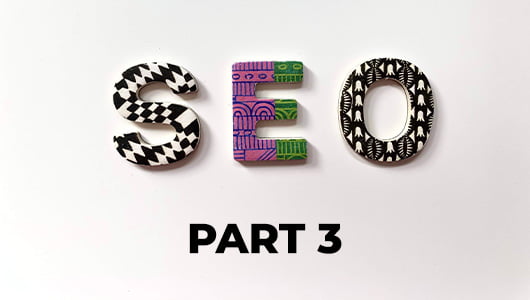What should I look out for in modern day SEO?
Search engine optimisation, or SEO in short has much relevance with the technical aspects with your website. Sure, content still plays an important role to your brand’s ranking on search engines but implementing good technical structure can help give it a boost too!
The below will walk you through the technical concepts of SEO that you should know about.
Part 3: Technical Relevance in SEO
SSL Certificate
In the era of web and data security, SSL certificates have become very common on transactional or eCommerce websites – but that does not mean it does not concern you. Investing in a SSL certificate can indicate to search engines that your website considers data security and therefore, more credible compared to other websites.
Key takeaway: There are a ton of inexpensive SSL Certificates that you can invest in. Go for the basic ones as those are enough if you are not working with sensitive customer data. It’s the easiest and the least you can do for your website.
Site Structure
Having a clear and straight forward website structure helps search engines index your website more effectively. Do not have hidden pages or complex links especially between your main pages. If it is confusing to search engines, it can indicate that your website isn’t friendly to readers. Creating an XML sitemap can help too!
Key takeaway: Keep your website’s structure as straight forward as possible. Minimize the need of hidden pages (why do you even need them?) and make sure they are well linked and accessible across the website.
User Interface
While this does not directly affect searchability on search engines, having good user interface contributes to good user experience and in return, potentially reducing bounce rates which is an added bonus to contextual relevanceon SEO.
Key takeaway: Having good user interface is never a bad thing. This includes a clear navigation scheme, related links, social sharing icons and even placing of textual content from page to page.
No 404
This is the dreaded error code when a page cannot be displayed or found with a given URL. In short, your website should not consist of broken links. Not only it annoys human readers, but search engines will consider your website as incomplete, therefore affecting your website’s ranking on search engines.
Key takeaway: Sometimes, it is inevitable for a website to have 404 pages (especially if you have huge amount of content over time). The least you can do is to ensure that your 404 pages are not left as ‘default’. It helps to have a customised 404 page that allows users to navigate to other content instead of hitting the ‘back’ button on the browser.
Mobile Support
Mobile compatibility has been a rising consideration by search engines. Websites that caters to mobile generally fares better compared to one that is unreadable on mobile. It’s good practice to ensure key content and navigation is easily readable on both desktop and mobile devices.
Key takeaway: Your website has to be at least mobile responsive to pass this requirement. If you are unsure, simply visit your website via your mobile and see if the content fits well on screen with no side scrolling required.
Loading Speed
This is an important factor as slow page load time can cause search engine crawlers to ‘give up’. Elements that can cause slower loading times include image size, animations,
Key takeaway: Never assume that your website is okay even if it loads quick on your PC. There are a number of free tools that provides a more realistic analysis on page load time, including a breakdown of the areas causing it to be slow.


![Digital Branding [Part 2]: The Results 1 openminds-market-insights-digital-branding-part-2-the-results](https://www.openmindsresources.com/wp-content/uploads/2023/11/openminds-market-insights-digital-branding-part-2-the-results.jpg)

